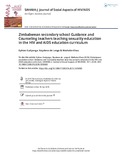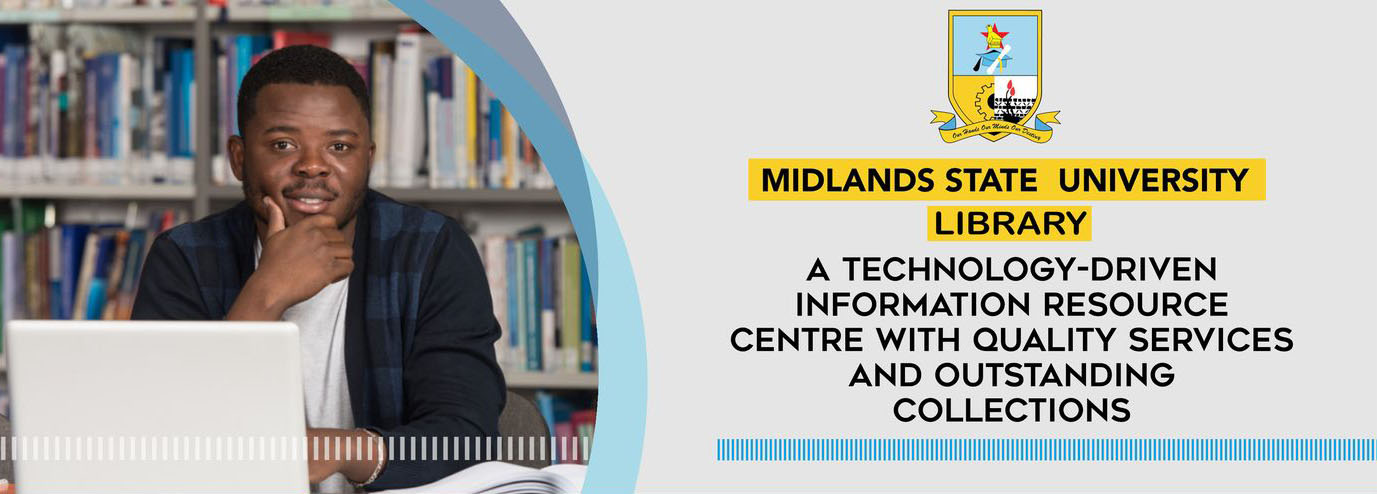Please use this identifier to cite or link to this item:
https://cris.library.msu.ac.zw//handle/11408/3615Full metadata record
| DC Field | Value | Language |
|---|---|---|
| dc.contributor.author | Gudyanga, Ephias | - |
| dc.contributor.author | de Lange, Naydene | - |
| dc.contributor.author | Khau, Mathabo | - |
| dc.date.accessioned | 2019-05-06T14:33:25Z | - |
| dc.date.available | 2019-05-06T14:33:25Z | - |
| dc.date.issued | 2019 | - |
| dc.identifier.issn | 1729-0376 | - |
| dc.identifier.uri | https://doi.org/10.1080/17290376.2019.1610485 | - |
| dc.identifier.uri | http://hdl.handle.net/11408/3615 | - |
| dc.description.abstract | In spite of the importance of sexuality education and HIV and AIDS education in preventing HIV infections, Zimbabwean secondary school Guidance and Counseling teachers are not engaging optimally with the current Guidance and Counseling, HIV and AIDS & Life Skills education curriculum, and hence, they are not serving the needs of the learners in the context of the HIV and AIDS pandemic. The aim of the study, therefore, was to explore how Guidance and Counseling teachers could be enabled to teach the necessary critical content in sexuality education in the HIV and AIDS education curriculum. A qualitative research design, informed by a critical paradigm, using participatory visual methodology and methods such as drawing and focus group discussion, was used with eight purposively selected Guidance and Counseling teachers from Gweru district, Zimbabwe. The study was theoretically framed by Cultural Historical Activity Theory. Guidance and Counseling teachers found themselves in a community with diverse cultural practices and beliefs of which some seemed to contradict what was supposed to be taught in the curriculum. The participatory visual methodology, however, enabled a process in which the Guidance and Counseling teachers could reflect on themselves, the context in which they taught, their sexuality education work and learn how to navigate the contradictions and tensions, and to use such contradictions as sources of learning and sources for change. The results have several implications for policy in terms of the Guidance and Counseling curriculum and engaging with cultural issues; and for practice in terms of teacher professional development, teacher training, and for stakeholder contribution. | en_US |
| dc.language.iso | en | en_US |
| dc.publisher | Taylor & Francis Open | en_US |
| dc.relation.ispartofseries | SAHARA-J: Journal of Social Aspects of HIV/AIDS;Vol. 16; No. 1: p. 35-50 | - |
| dc.subject | Guidance and counseling | en_US |
| dc.subject | HIV and AIDS education; | en_US |
| dc.subject | Sexuality education | en_US |
| dc.title | Zimbabwean secondary school guidance and counseling teachers teaching sexuality education in the HIV and AIDS education curriculum | en_US |
| dc.type | Article | en_US |
| item.fulltext | With Fulltext | - |
| item.openairecristype | http://purl.org/coar/resource_type/c_18cf | - |
| item.cerifentitytype | Publications | - |
| item.openairetype | Article | - |
| item.grantfulltext | open | - |
| item.languageiso639-1 | en | - |
| Appears in Collections: | Research Papers | |
Files in This Item:
| File | Description | Size | Format | |
|---|---|---|---|---|
| gudyanga.pdf | Full Text | 1.68 MB | Adobe PDF |  View/Open |
Page view(s)
126
checked on Oct 24, 2025
Download(s)
48
checked on Oct 24, 2025
Google ScholarTM
Check
Items in MSUIR are protected by copyright, with all rights reserved, unless otherwise indicated.



